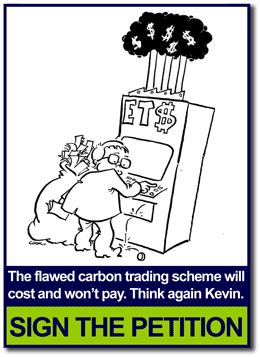The Kangaroo Island Council has decided it will take responsiblity for local management of a government subsidised scheme to install solar panels on the roofs of homes.
Even with proposed government subsidies, the installation of solar panels will not be a cost-effective option for most householders.
It is easy to be wowed by power production figures which talk vaguely about ‘up to 5kw per day.’
The ‘up to’ is the problem. Rather than being swayed by marketing material which talks about potential, it is better to consider real world results in Australian situations.
Experience in Queensland suggests a six panel solar system will generate an average of not five, but two kilowatts per day.
Let’s do some maths. And let’s be generous, since we all know that Kangaroo Island is sunnier than Queensland (not), and say the actual average power production will be 2.5kw.
If you now pay 25c per kw for electricity, this means the power your solar panels generate will save you 50c per day. This adds up to $182.50 per year.
At that rate it will take nearly fifteen years to repay the $2650 cost of installation.
But that doesn’t take into account the cost of that money in interest lost if the money had been invested, or paid if the money was borrowed.
For example, at the moment Australian personal loan rates vary from about 12% to about 15%. Let’s say that you are able access a discount loan at a 10% rate to buy your solar panels. You would be paying $265 a year in interest (not counting any other fees).
This means that, far from saving money and paying for itself over time, your solar installation would cost you $265 -$185 = $80 per year more than you are paying now.
In a study completed in 2008, the Royal Institution of Chartered Surveyors found that in most circumstances it would take over 100 years of undiminished supply from domestic solar panels to repay the cost of installation.
For example, even with hyper-inflated prices paid by the government for power fed back into the grid, some Queensland families have calculated they are saving about $13 per month on an investment of close to $30,000. This means the repayment time, not including any interest/finance cost, is over 300 years.
The life of a solar panel installation is about 25 years.
Some people, of course, may be willing to pay extra for their power in the belief that they are doing something to help the environment.
But even this is questionable. A NSW government study found that solar panels were amongst the least efficient methods of reducing power consumption and greenhouse gas emissions. The cost of CO2 abated through the use of domestic solar panels is approximately $400 per ton. This compares with the current international trade price of $26 per ton abated.
Most home owners will save more money and do more for the environment by simply ensuring their homes are adequately insulated, and that they turn off lights and appliances when not in use.




